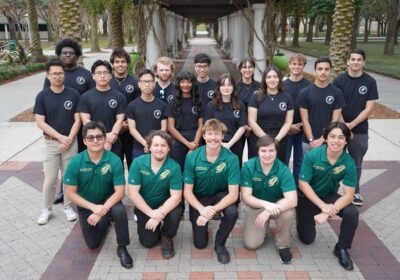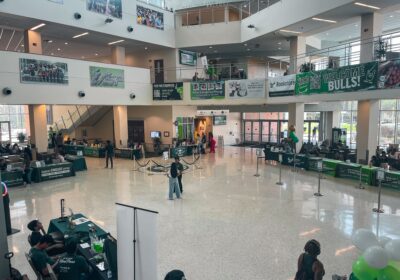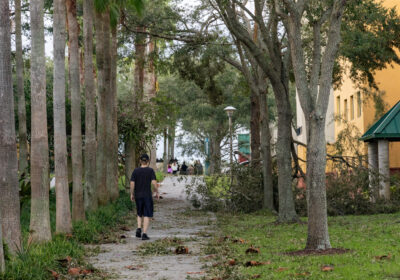LED lights nearly implemented in all parking garages

With the potential to save USF about $591,695, the last two of four parking garages on campus will be upgraded to LED lighting The final touches on the Laurel Parking Garage will be completed this week and the Collins Boulevard Parking Facility, will start construction mid-November.
The Student Green Energy Fund Council (SGEF) funded the LED projects in hopes to decrease the carbon footprint of the parking garage structures.
This council works to conserve energy, reduce energy costs, lower greenhouse gas emissions and promote renewable energy technologies, according to the SGEF website. The council and its various projects are funded through the semesterly $1 per credit hour student fee.
The Laurel Parking Garage LED installations will cost about $372,771 from SGEF and $20,000 from the collaborating department, Parking and Transportation Services (PATS).
However, it has the potential to save USF $540,477 over the course of 10 years. The annual energy savings would be 600,530 KWh per year, according to the proposal details form located on the SGEF website.
According to these details, the existing lights and fixtures that are not damaged will be recycled by PATS. After the completion of the project, PATS will have the sole responsibility of replacing any broken lights.
The Collins Boulevard Parking Facility installations will start the second week of November, according to Steve Wasilefsky, the project manager for the construction phase. He said by the time students arrive back from winter break, the garage will be finished.
The cost for these replacements in Collins will be $323,094, which comes from SGEF, along with the $20,000 provided by PATS. The 487 light fixtures that will be replaced will save $51,218.93 annually specifically for the Collins Boulevard Parking Garage, according to proposal details. Half of the savings from the funding PATS contributed would reinvest into SGEF to fund future projects.
Wasilefsky said the construction for both the garages are being conducted between 10 p.m. to 6 a.m. to ensure capacity is at a low volume, however, there are still students who utilize the facility during that time.
“The biggest risk is students using the parking garages for their rock bands, marching band or racing their automobiles,” Wasilefsky said. “We have coordinated with UP (University Police) to make them aware to patrol during those off hours so we don’t put anyone in harm’s way.”
Wasilefsky said students will be able to notice the improvements in the parking garages since gas lights will no longer be in use.
Nainan Desai, the assistant director of the Facilities Management, said the gas lamps are, “yesterday’s technology” since it points light out in all directions, whereas the LED lights are able to focus in one direction, which emits less energy.
The gas lamps lasted between 50,000 to 60,000 hours until the bulbs would blow out, however, LED lights have a longer lifespan of 70,000 to 100,000 hours, according to Desai.
Funding for the project began in spring 2012 when the LED lights were installed in the Crescent Hill Parking Garage. Desai said it was not financially responsible to introduce the LED proposal since it was new technology at that time.
As the price dropped over the years, it became more practical to invest.
“LED has only come of age within the past four to five years,” Desai said. “It was as if you put in $100 to save $1, it wasn’t really worth it.”
Desai said by reducing the energy consumption using LED lights and producing less carbon dioxide, it would serve as a common good for students.
“This is the technology forefront and we want to make sure that our students know about what is being adapted,” Desai said. “This is something the university should take pride in for having students well placed and well educated.”







